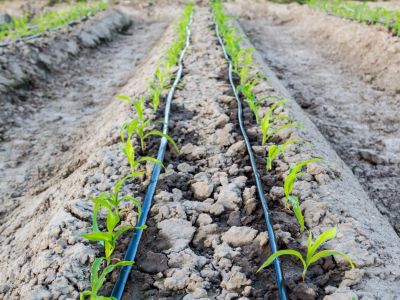Learn How Long to Water Plants with Drip Irrigation
Once your system is set up, you can use these general guidelines to water your new and established plantings. Always check the soil to see if you are watering enough or too much. The question, “how often should I run drip irrigation,” is often asked. Newcomers to drip irrigation often overwater. Typically drip irrigation systems are set up to run one hour per week. Plants needing a moister soil may need to be watered twice per week. Porous soils such as sandy soils will also need more frequent watering because the water flows through the soil quickly. Xeric or native plants, which consume less water, may only need to be watered every two weeks.
How Often and How Long to Run Drip Irrigation
How long to run drip irrigation for trees
A newly planted “whip” may require only 1 to 2 gallons (3.78 to 7.57 l.) per week, whereas a 2 inch (5 cm.) caliper newly planted tree may need 10 to 12 gallons (37.8 to 45 l.) per week. You can figure the amount for an established tree by multiplying its trunk diameter by 10 gallons (37.8 l.). For example, a tree with a 2 inch (5 cm.) diameter trunk will need approximately 20 gallons (75.7 l.) of water per week.
How long to run drip irrigation for shrubs
A medium sized shrub, for example, one growing in a 5 gallon (18.9 l.) nursery pot, could use about 6 gallons weekly. A large sized shrub may need 12 gallons (45 l.) of water per week. If the shrub needs moister soil, you can add more emitters around the plant. Conversely, if the shrub is xeric, you can reduce the emitter flow size.
How long to run drip irrigation for vegetables
Start with 2 gallons (7.57 l.) per week and adjust if needed.
How long to run drip irrigation for flowers
Initially, start with 2 gallons (7.57 l.) per week for annuals and perennials. Xeric perennials can be started with 1 gallon (3.78 l.) per week. It’s important to keep an eye on how well the plants are being watered and to the correct depth. Adjust the emitter sizes and number if needed, as well as the time watering.
